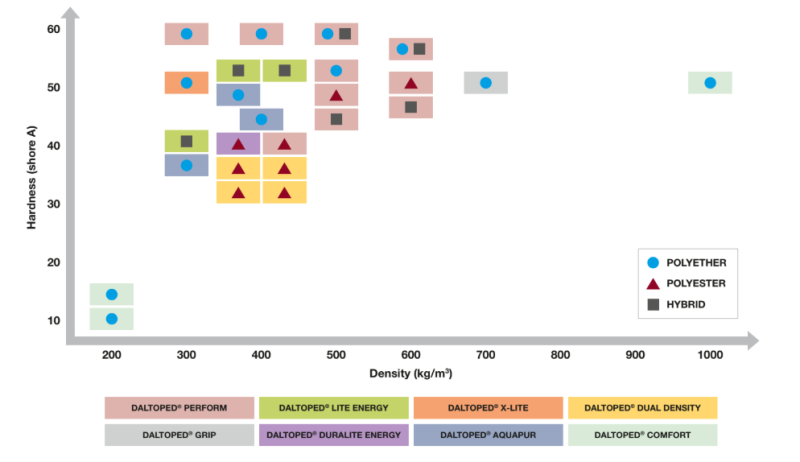Enhanced TDS
Identification & Functionality
- Blend
- No
- Chemical Family
- Polymer Name
- Single Ingredient
- Yes
- Technologies
- Product Families
Features & Benefits
- Labeling Claims
- Materials Features
- Performance Benefits
- Lightweight
- Cushioning effect
- High resilience
- Cold temperature resistant
- Hydrolysis resistant
- Good compression set
- Abrasion resistant
- Multiple color possibilities
- Suitable for PU/PU, PU/TPU, PU/VR
- Outstanding flow for design flexibility
- Cost benefits
- No additional investment required (suitable for processing on conventional polyurethane machinery)
- Low density
- Low scrap rate because of good flow and mold filling
- Lower energy consumption and assembling costs (compared to EVA)
- Processing Benefits
- Excellent flow
- Good blend stability in machine tanks
- Compatible with all existing and evolving shoe manufacturing techniques such as automation, speed, spraying, casting, etc. ...
- Excellent physical properties compared to EVA
- Production flexibility as one system can be used for both midsole and single density
- Product Feature
- High rebound and cushioning
- Excellent physical properties compared to EVA
Applications & Uses
- Compatible Polymers & Resins
- Plastics & Elastomers End Uses
- Plastics & Elastomers Processing Methods
- Markets
- Applications
Technical Details & Test Data
- Technical Data

Other
- Mechanical Properties
Value Units Test Method / Conditions Compression Set max. 10.0 - at room temperature, Midsoles Compression Set max. 10.0 - Unitsoles, at RT Elongation min. 300.0 - of Midsoles Elongation 340.0 - of Unitsoles Hardness 30.0-40.0 - Midsoles, tailor made Hardness 35.0-45.0 - Unitsoles, tailor made Tensile Strength 2.5-3.0 MPa MPa Midsoles Tensile Strength 2.5-3.5 MPa MPa Unitsoles - Physical Properties
Value Units Test Method / Conditions Density 350.0-450.0 - Midsoles Density 450.0-500.0 - Unitsoles
